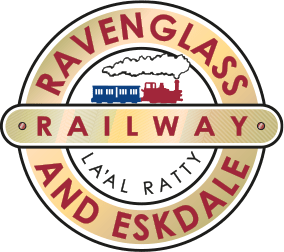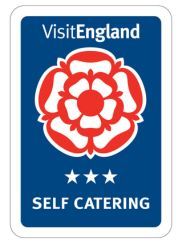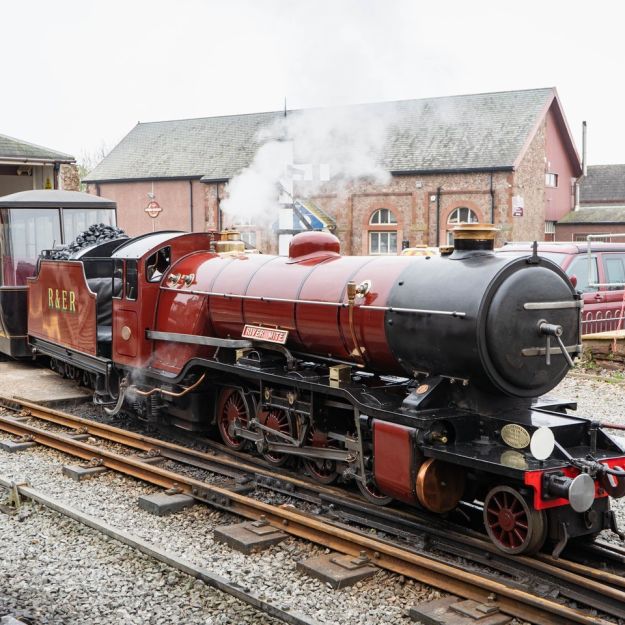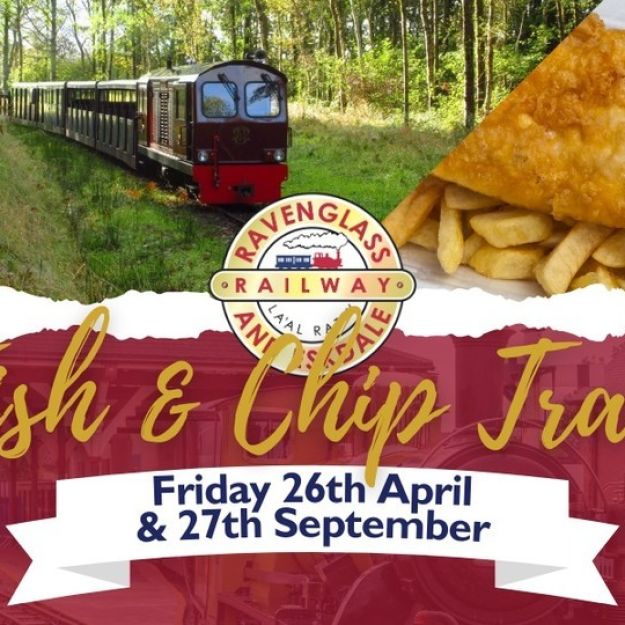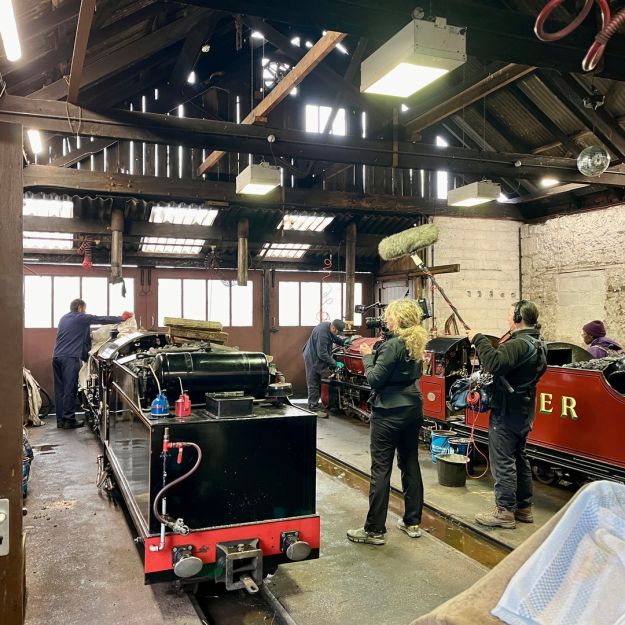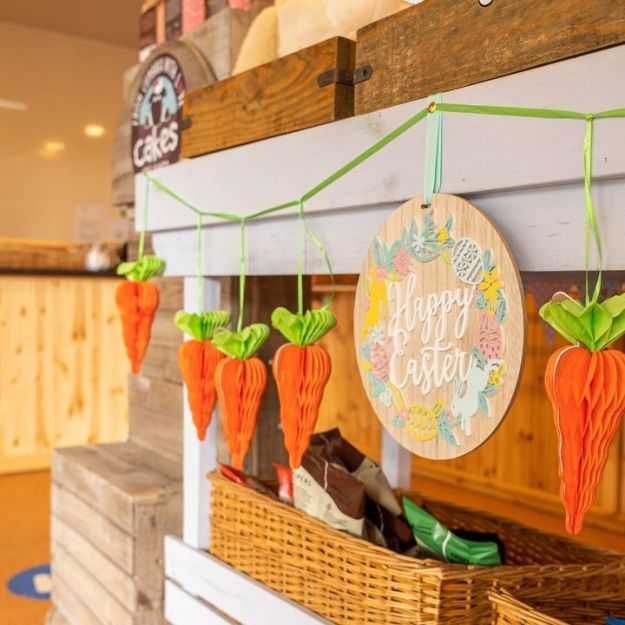Introduction
The Ravenglass and Eskdale Railway was originally built in 1873 and was commercially opened on the 24th of May 1875. Its main purpose was to transport the iron ore that was mined in the hills above the village of Boot down to Ravenglass. On arrival at the coast, the iron ore was transferred to the Furness Railway's mainline to Barrow.
The Railway was also open to passenger traffic (beginning in 1876) and was built to the narrow gauge of 3ft between the rails. This made the Ravenglass and Eskdale Railway the first public narrow gauge railway in England!
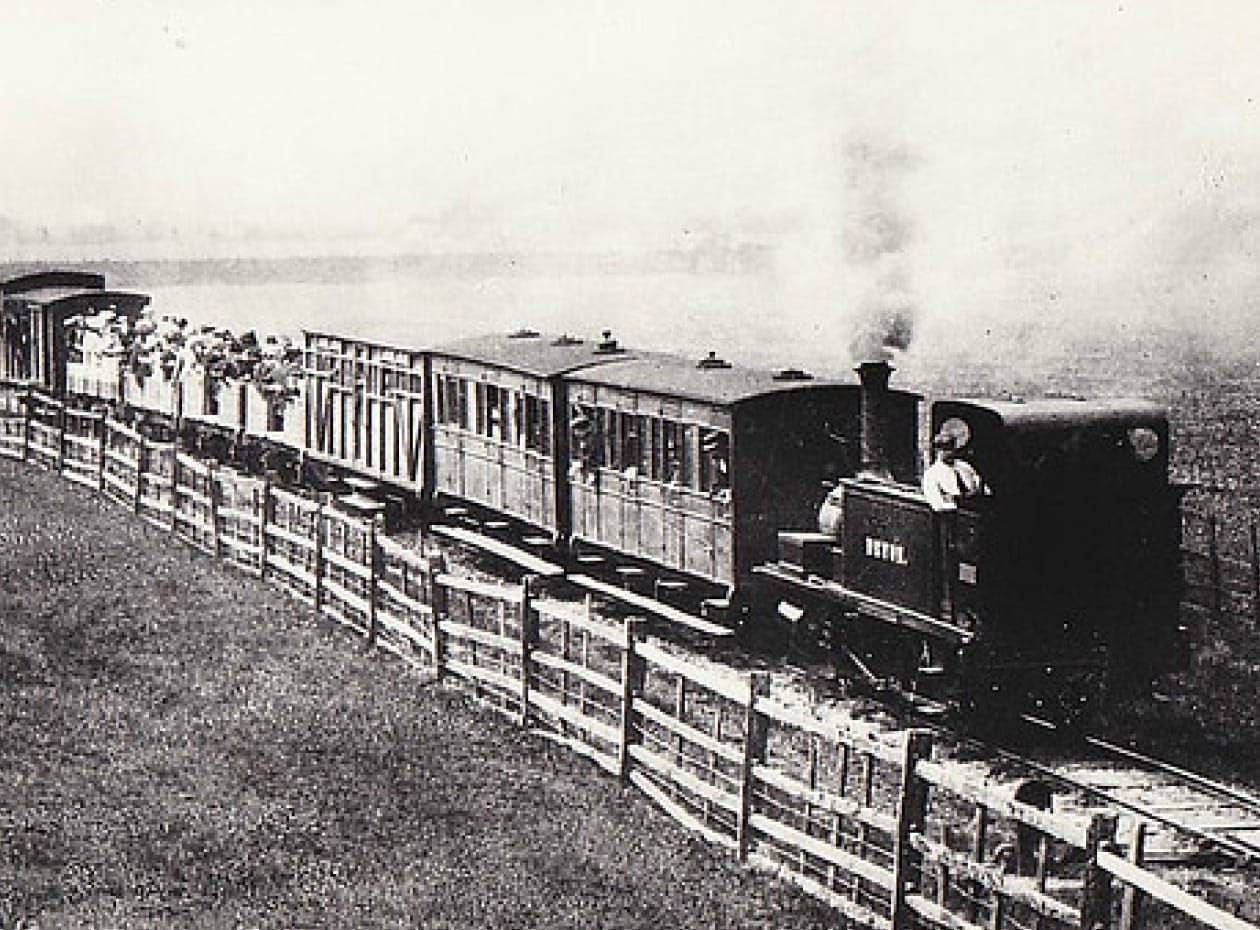
Our Journey Through Time
1873-1875
The beginning of our story
Ravenglass and Eskdale railway was the first public narrow gauge railway in England and today is one of the world’s oldest and longest surviving narrow gauge railways, having carried minerals and passengers on three different gauges of track since opening.
1875
Open for commercial traffic
The railway opened to commercial traffic in 1875. The line has a rich cultural heritage. Its main purpose was to transport iron ore from the mines above Boot down to Ravenglass where it was transferred onto the Furness Railway mainline.
1876
Open for passengers
The railway started to carry its first passengers. It was originally built to the narrow gauge of 3ft and was the first public narrow gauge railway in England.
1894
World's oldest working 15-inch gauge locomotive built
River Irt, one of five heritage steam engines, was originally built by Sir Arthur Heywood in 1894 and named Muriel. River Irt is the oldest working 15-inch gauge locomotive in the world.
1913
Issues with viability
In 1913, the railway closed due to diminishing quantities of iron ore and falling passenger numbers. Subsequently, the railway's rolling stock and track fell into disrepair. But, this was not the end for the railway as during the Great War came an unexpected twist of fate.
1915
A new era
In 1915, miniature railway engineers and prolific model makers, WJ Bassett-Lowke and R Proctor-Mitchell, acquired the railway line as a base for testing their little locomotives. These engines ran to a smaller gauge of 15 inches. They steadily began to re-lay the line and by 1916 the re-gauged track ran as far as Irton Road. By the following year it ran the full length of the line to its terminus and present-day position at Dalegarth for Boot.
1920
Quarrying recommences
Quarrying recommenced on the line near Beckfoot in the 1920s, this time for granite, which was transported to Murthwaite. Here it was crushed for use mainly as road stone and railway ballast.
1946
Changes in ownership and use
Ownership of the line had transferred to the Keswick Granite Company, who in 1953 ceased quarrying operations. Except for the war years, passenger traffic continued.
1958-1959
The search for a buyer
The line and fittings were offered for sale but unfortunately, without any potential purchaser. It was announced that the 1960 season would be the last.
1960
Railway saved and Pullman Camping Coaches arrive
The railway was to be sold by auction at the nearby Gosforth Public Hall in September. Locals and enthusiasts came together to try to save the line, gaining national media coverage and support, ultimately placing the winning bid. Insufficient funds had been raised, and the balance of the purchase price was put up by Midlands stockbroker Colin Gilbert and local landowner Sir Wavell Wakefield MP, who went on to form the current Railway Company.
The Ravenglass & Eskdale Railway Preservation Society has been in existence since 1960, when it was formed “for the purpose of preserving the Railway, which is a continuing function until the Railway can run no more”.
Pullman Camping Coaches (British Railway identification numbers 022261 & 022262) were allocated to the Ravenglass siding on March 14th 1960.
1966
Changes at Ravenglass mainline station
In the Autumn of 1966, records show Ravenglass station was no longer manned and both Pullman Camping Coaches were to be relocated.
1967-1968
Pullman Camping Coaches saved
The Camping Coaches were moved to Seascale Station siding in 1967 but records conclude they were not used in 1968. On September 14th they were withdrawn by British Railways. On September 20th they were saved by the Ravenglass and Eskdale Railway and moved back to the Ravenglass railway siding.
The mainline connection at Ravenglass was disconnected the following week, another casualty of the Beeching axe in the mid-60s. The Beeching axe was responsible for the destruction of smaller branch lines throughout the railway system. This meant that many Camping Coaches became stranded and this was the start of their demise. On September 28 1968 both Camping Coaches were deleted from British Railway records. To this day, both Camping Coaches are still in their original position, isolated from the mainline but parked in an attractive coastal location as they were meant to be.
1968
Exciting new developments
By late 1968 the Ravenglass and Eskdale Railway had moved on, becoming an integral part of the Wakefield family business in the Lake District. Much work had already been done to catch up with the backlog of maintenance, new coaches had been built, and the Preservation Society had funded the building of a new locomotive, the River Mite.
1976
Major work continues
Further major works continued; Ravenglass station was re-modelled and a further locomotive, Northern Rock, was built in the company's workshops, entering service later this year.
1978
Famous walking links
There are seven intermediate station stops where the railway links to walking routes. These were made famous by Alfred Wainwright in his 1978 publication, 'Walks from Ratty'.
2005
Developments at Dalegarth
Work started on the building of a new station and visitor centre at the Dalegarth for Boot terminus.
2007
Official opening for Dalegarth
The new building at Dalegarth for Boot was officially opened by Pete Waterman in April 2007.
2011
New café at Ravenglass
The old café on Platform 1 at Ravenglass was renovated and extended, officially opening in 2012.
2017
Pullman Camping Coaches in need of rescue again
The self-catering Pullman Camping Coaches Elmira and Maid of Kent were deteriorating and were eventually taken offline in September 2018, due to the serious and urgent structural repairs required to the undercarriages of both. Structural repairs and a full refurbishment to the exteriors and interiors, including essential repairs to the marquetry, were urgently needed to prevent further deterioration.
2018
Museum renovation
This year saw the completion of the Ravenglass Railway Museum renovation project. The building was opened in June by Paul Atterbury and is full of great new interactive exhibitions.
2019
National Lottery Heritage Fund to the rescue
A joint application with the Ravenglass Railway Museum was submitted to the National Lottery Heritage Fund to restore British Railways Pullman Camping Coaches. The Coaches were built in 1917 as part of L.N.W.R Continental Ambulance Train (CAT) No. 41 serving the WW1 Western Front. The bid was successful and work was due to begin in 2019.
2019
New experience carriages commissioned
After a successful bid for ERDF funding, we started work on our carriage development programme in partnership with the Ffestiniogg Railway to create Joan, Ruth, and 1st Class Saloon 140.
Joan is a stunning Pullman Observation Carriage, made of glass for panoramic views of the dramatic western coastline and mountains. Ruth is an elegant Directors' Saloon Carriage with covered outdoor balcony seating on each end and USB speakers. She is the first experience carriage at the railway to be fully wheelchair accessible.
Joan and Ruth are named in honour of Lord Wakefield’s eldest and youngest daughters – The late Honourable Mrs Joan Raynsford and Mrs Ruth Adorian. Both ladies were company directors for over 50 years. The Hon. Mrs Adorian was a strong local campaigner for disability access in public spaces.
2020
Global pandemic
The world was gripped by the Covid-19 pandemic and the railway was closed for the first time to all passenger traffic. Work continued behind the scenes to maintain buildings, track, and rolling stock.
The Pullman Camping Coaches suffered severe delays and works did not start until six months later than planned.
2021
Recovery from Covid-19 and opening of restored Pullman Camping Coaches
The Pullman Camping Coaches finally reopened on the 17th of May for self-catering holidays and welcomed their first guests.
The railway was awarded a culture recovery grant administered by the National Lottery Fund to help mitigate the losses incurred through closures because of the Covid-19 pandemic. The funds helped to maintain rolling stock, track, and set out a roadmap to return the railway back to a viable business in the first part of its recovery.
2022
Official launch of three new experience carriages
16th May marks the official launch of the three new carriages Joan, Ruth, and 1st Class Saloon 140 into service. It’s a family affair with the honours passed to the descendants of Lord Wakefield’s daughters, the late Hon. Joan Raynsford and Hon. Ruth Adorian.

